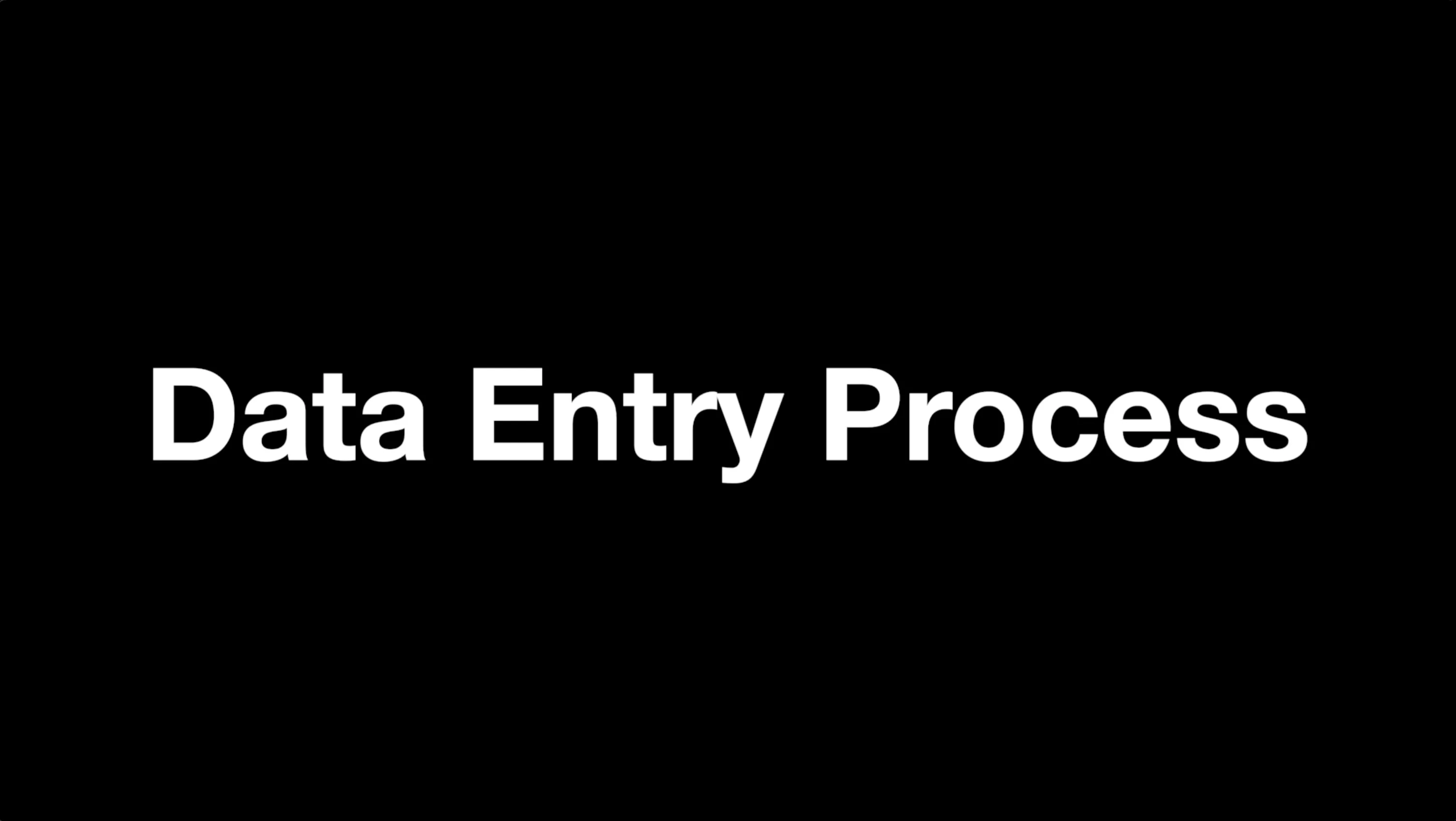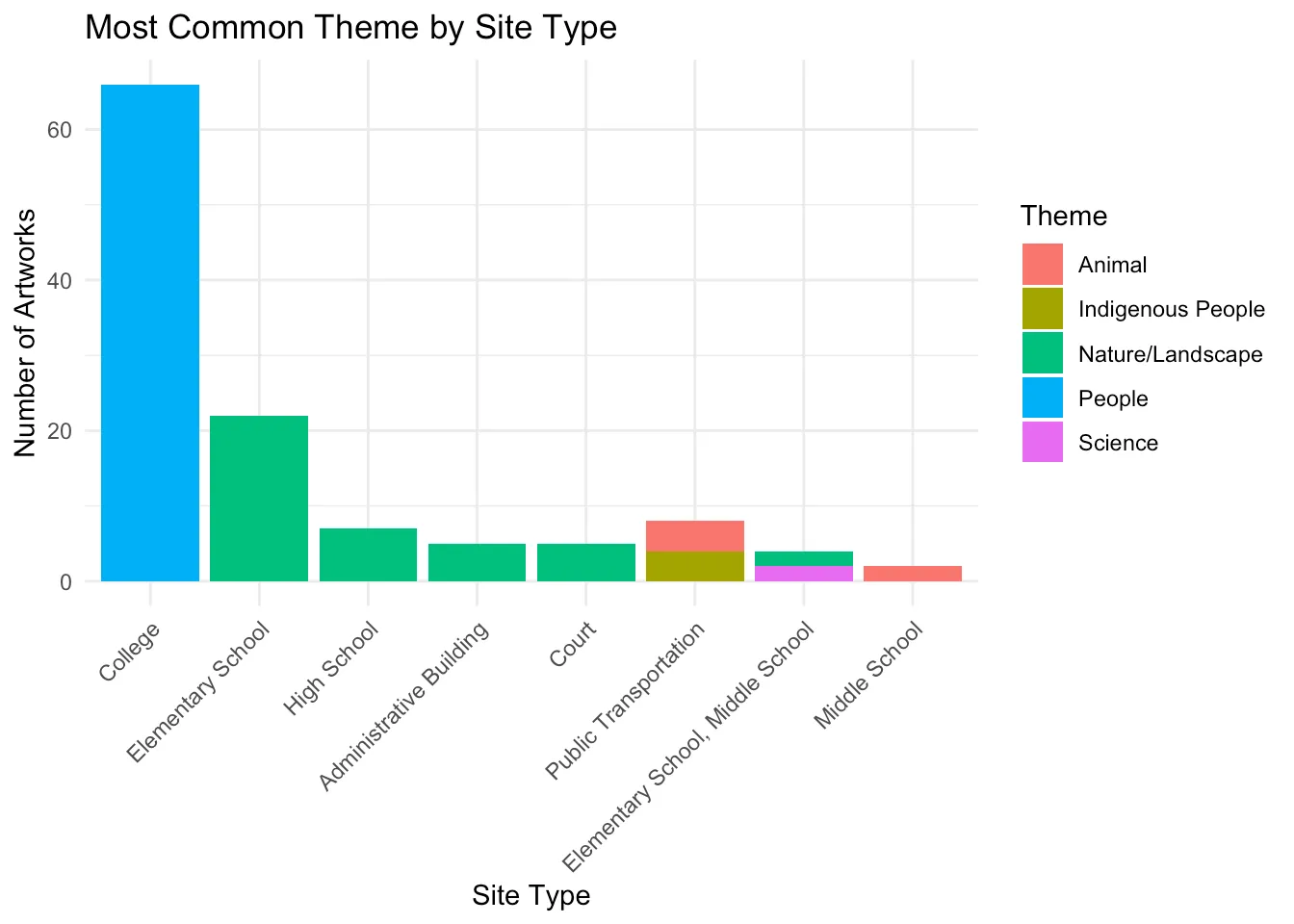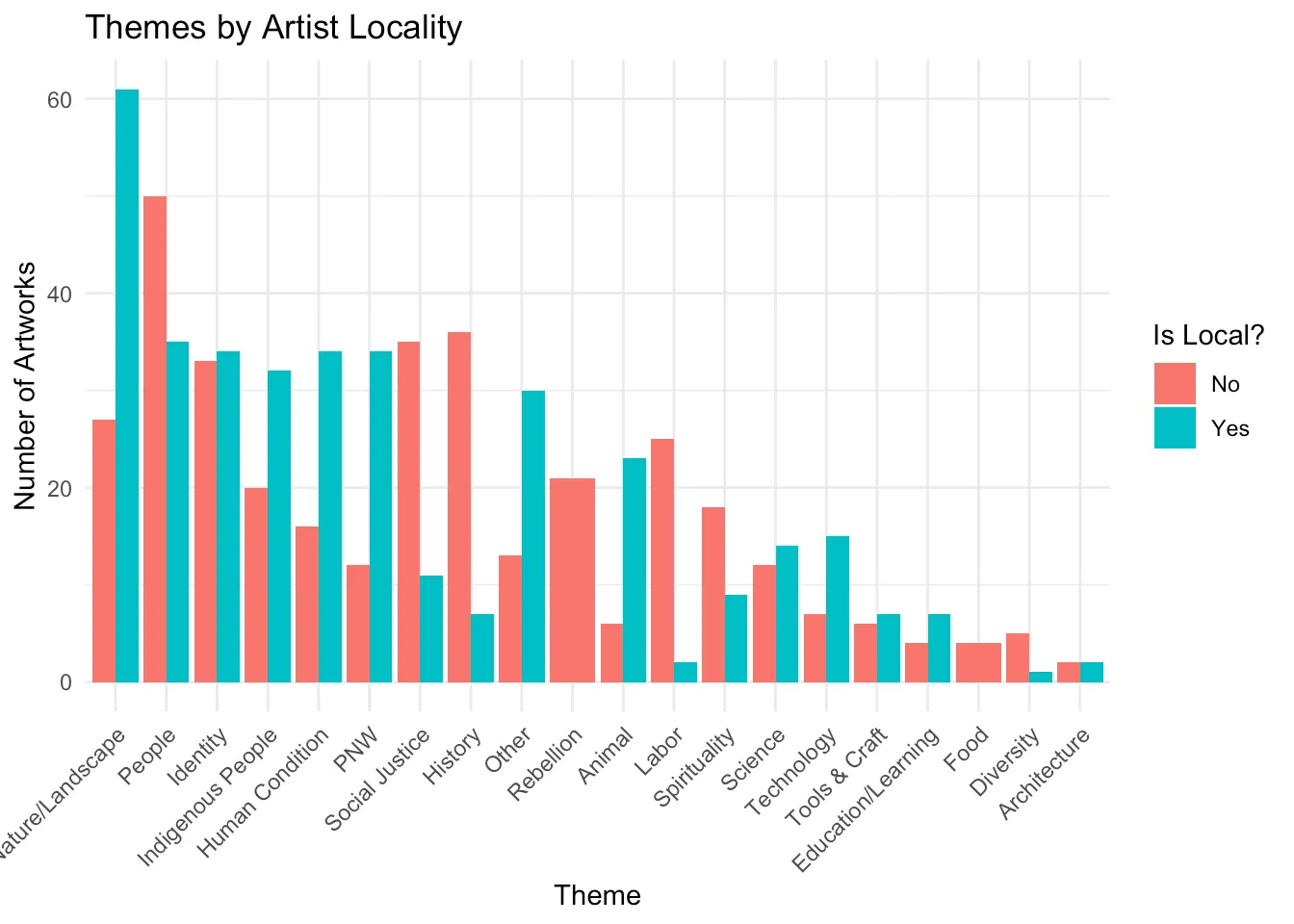Tools/Methods
Throughout this project, we used a variety of different tools and websites to create this project. Firstly, we accessed Washington's State Art Collection data from 2024 through Data.gov. An access link to the dataset is available on this page and the home page. Accessing the CSV file, we used Google Sheets to peruse the data and add entries. Similarly, we used RStudio to filter, delete, and mutate data, as well as create graphs. Finally, each image and description is provided by the ArtsWA website, and each entry has the corresponding link, which the user can access.
Findings
To the left are two graphs that answer our main research questions.
The first of the two graphs counts the mode of the themes based on each site type within the dataset. Within the dataset we utilized, colleges and universities contained the overwhelming majority of public artworks. People as a theme come up the most when looking at colleges and universities. When looking at lower education, like elementary, middle, and high schools, the most common theme is nature/landscape related. This dichotomy is interesting to dissect, especially when considering that artworks related to people may indicate senses of identity, while artworks that focus on nature or landscape may allude to exploring the world. With that in mind, it may be the intention of public spaces in Seattle for higher education to be spaces of finding oneself, while places of lower education are for understanding our environments. One other datapoint that is of note within Graph 1 is that Indigenous people are the most frequent theme when it comes to artworks within public transportation hubs. An idea as to why is that there is a sense of responsibility by local governments to acknowledge the usage of historically indigenous lands, and the Seattle public transportation system traverses said lands.
The second graph communicates the commonality of themes based on whether an artist is considered local or not. The way our team determined if an artist is local was by reading their biography, which was provided through the ArtsWA website (which can be found in each artwork entry), and if it said they are from Washington, Oregon, or the PNW, then we marked them down as such. Graph 2 on the left clearly shows there are relationships between an artist's locality and the themes they depicted in their artwork. Themes like nature/landscape, PNW, Indigenous people, and animals were dominated by local artists, while themes like social justice and history were majority created by non-local artists. This connection of themes and artist origins seems to stem from familiarity with the surrounding environments, with setting and regional themes being a commonality within local artists, while broader thematic topics like history and social justice are themes covered by outsider artists. Finally, it is important to point out how the theme of the PNW is handled by community artists. According to our data, 3% of the artworks in our collection are PNW-related and created by non-local artists, while 9% were created by local artists (code for these findings can be found on the link to the left). The 3:1 ratio in PNW-themed artworks reveals not just a pattern of thematic choice but a deeper tendency for local artists to serve as cultural stewards of place. This suggests that the PNW theme is not simply aesthetic, but reflective of lived experience, community identity, and regional consciousness—elements that non-local artists may hesitate to represent without firsthand connection.


